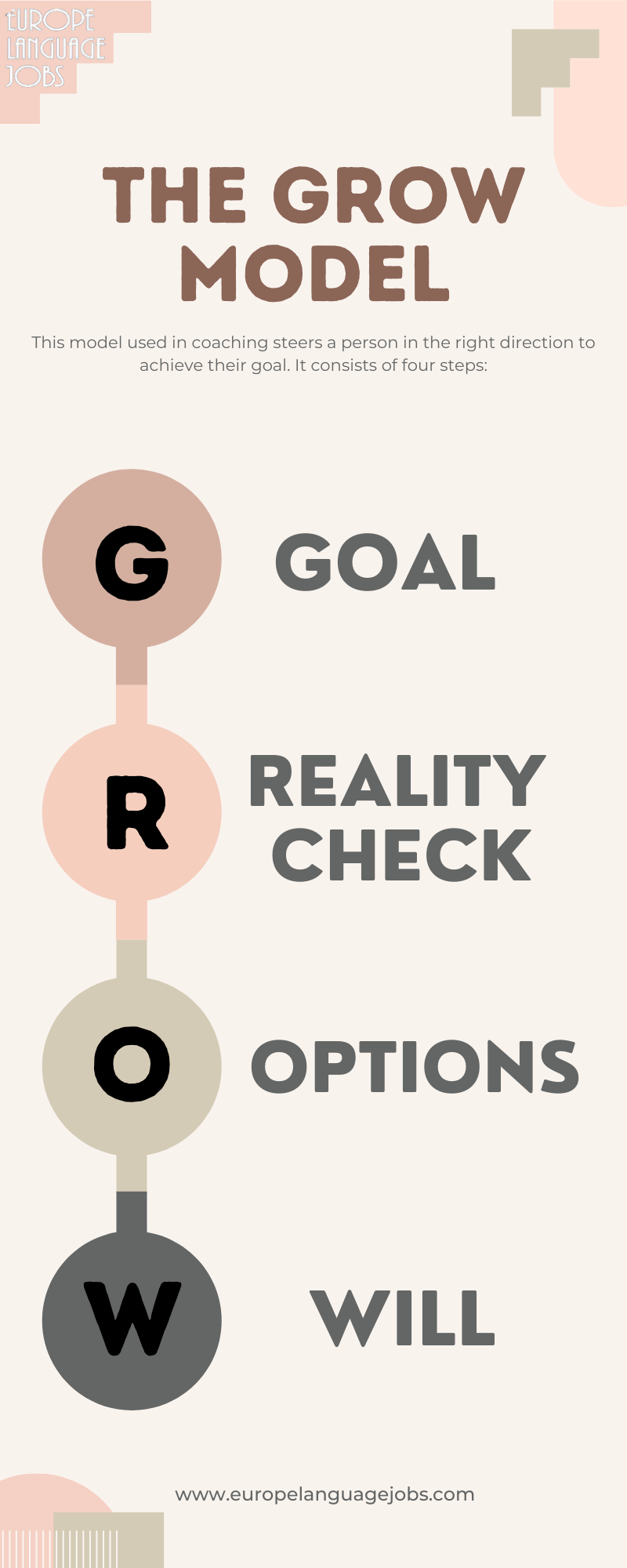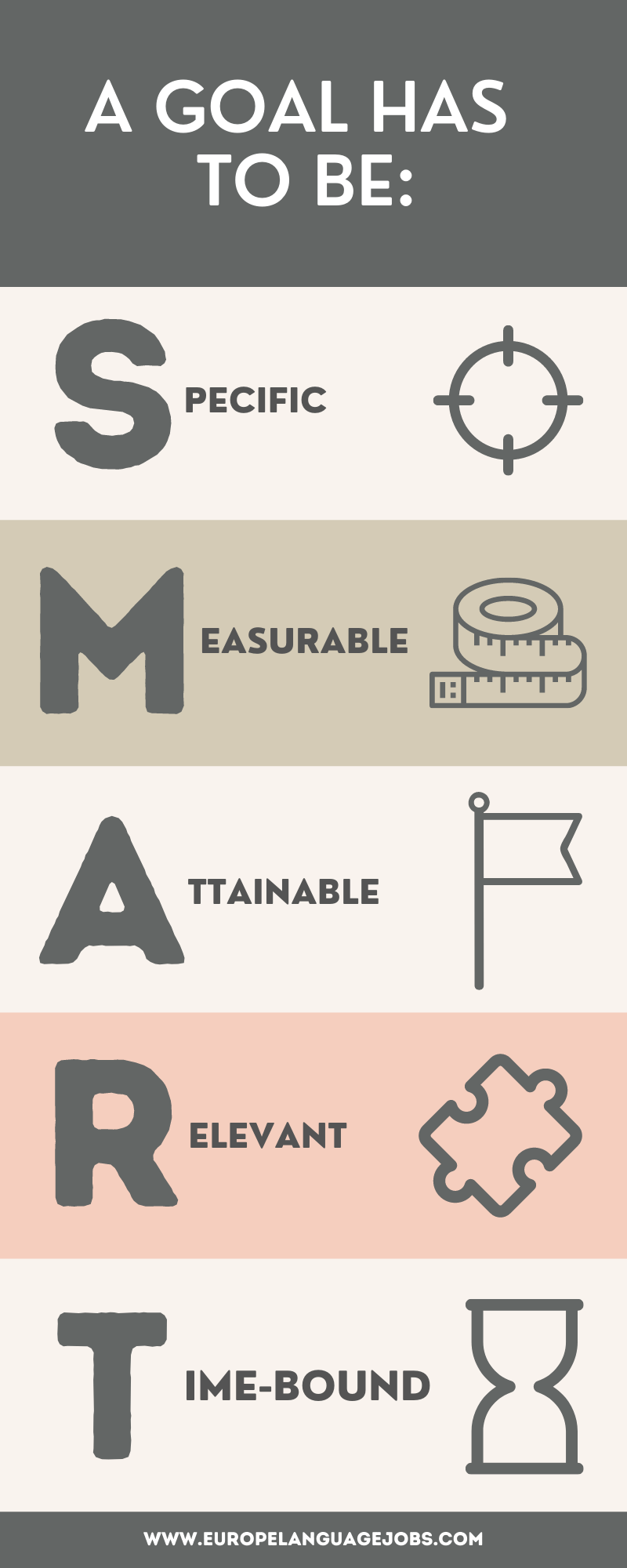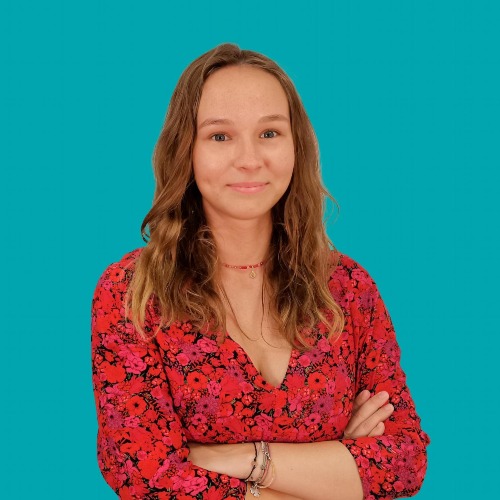We’re living in times when everybody is striving for something. Most of us have specific plans and goals that we want to fulfil. A goal, whatever it may be, requires some sort of organisational skills, self-discipline, and perseverance. It is a state we want to achieve by taking specific actions.
For men and women who wish to look healthy and attractive, that goal will be sculpting their bodies to their satisfaction. For an adventure junkie, it will be climbing a mountain in the Himalayas. For a student, passing an exam session will be enough. John wants to be rich, while Stephen dreams about a job full of passion and stimulating challenges.
Goals can be long-term or short-term. We all have them, and we all try to overcome the obstacles that life throws at us. Unfortunately, things don’t always go smoothly. Sometimes, we need relevant tools, which will help us reach the target.
The most popular conversation model in coaching is the GROW model. It steers a client in the right direction to achieve their goal. In order to succeed, we must take four steps and appropriately focus on each of them. Those steps are:
G – goal
R – reality check
O – options
W – will

Let’s focus on explaining the GROW model in practice, based on an example.
A student who wants to pass their upcoming exam session comes to a coaching meeting.
The coach’s first question will most likely concern the goal: What aspect would you like to discuss during today’s coaching session? What are your expected results of this meeting?
The right answer to this question would be: Today, I would like to find out what steps I need to take in order to properly motivate myself to study systematically.
The next step is the reality check. It can come with questions such as:
-
What exactly have you managed to achieve in that area over the past 2 days?
-
How much time have you dedicated today to working towards reaching your goal?
-
What makes your goal so important to you?
The student’s answer would be: Studying will help me save time, and I will learn to stop doing everything at the last possible moment. It will help me systematise my knowledge. So far, I have only read one page from my Philosophy textbook today.
Next, the coach will move on to questions about available options and possible solutions:
-
How would others deal when put in your situation?
-
What would you do if you had unlimited funds/resources?
-
Who could help you in reaching your goal?
The answer: I would find a tutor and buy appropriate textbooks and ebooks. Fellow coursemates from the years above would help me.
In the next step, we refer to the will. The student is asked which option they are going to choose. They are encouraged to demonstrate the next steps that will bring them closer to achieving their goal.
The answer: Right after leaving the session, I will buy an agenda. I will plan out revision sessions for particular days. Once a week, I will meet with a friend who will help me understand Logic. I will spend the money I was given for my birthday on a textbook and an ebook, I will borrow all the other books from the library. Every day, I will read at least one chapter from a given domain. I’m going to systematically take notes while studying instead of right before the exam, which will help me save time.
As you can see, a well-formulated goal is the basis of a coaching process. To quote Kevin Hogan, “The first mistake people make is that they don’t know what it is that they want to achieve”. Those words hold the entire truth about the way in which we nullify our chances, just because we are unable to define our goal in a clear and precise way.
“The person who wins is the one with a clearly stated goal and an irresistible desire to achieve it” - with these words, Napoleon Hill encourages us to fight for our dreams. Something that might prove helpful in this area is a well-known model used in coaching - SMART.
A goal should be: S - specific M - measurable A - attainable R - relevant T - time-bound

For example, let’s imagine a woman who wishes to lose 20kg over a few weeks. Of course, this is a wrongly-stated goal and she will most likely never lose weight. That is because the goal has no time limit, is unrealistic and overly ambitious. There is no plan - all that matters is the result. What plays an extremely important role in coaching is the process itself. Each step taking us closer to the established goal should be well-thought-through and conscious. We must avoid platitudes and focus on the details.
Let’s assume now that the same woman consults a coach who recommends her to use the SMART model.
S - specific: “I want to improve my physical appearance and lose 12kg by going to the gym and maintaining a healthy diet”
M - measurable: “I will buy a gym card for 3 months, which will help me stay motivated and will add systematicity to my exercising”
A - attainable: “Thanks to exercising and a healthy diet, my body will be more attractive, and I will feel better about myself”
R - relevant: “Every week my body weight will drop by 1kg”
T - time-bound: “After 3 months of maintaining a healthy diet and exercising, I will weigh 12kg less”
Visualisation might prove useful in achieving a goal. It is a technique aiming to imagine oneself in the future, once the target is met. Visualisation is a great way to communicate with one’s subconscious. This coaching tool provides us with the feeling of control over our emotions and increases the feeling of fulfilment. It is also an incredible source of motivation and aids in creating new habits.
As an example, we can take a hiking enthusiast, whose biggest dream is climbing Mount Everest. We will begin the visualisation by finding a quiet, comfortable place, which will allow us to concentrate.
The duration of a visualisation varies - it depends on how much detail we wish to get into while imagining the process of reaching our target. A hiking enthusiast will most likely see themselves standing on the top of the mountain, admiring the views. They will remember the landscape, the weather, emotions, their companions, and the clothes they wore while their dream came true. If this was a coaching process, a series of questions regarding visualisation would follow:
-
What was the first step?
-
What were the next steps?
-
How did it influence your life?
-
How will you remember this day?
-
What did you learn from this experience?
-
What do you feel upon achieving your goal?
-
What was the biggest difficulty in achieving it?
-
Where did your funds/resources come from?
We can ask a number of other questions here. The most important part is to understand the process and reach the desired effect. By “seeing” the satisfaction and emotions, our brain will do everything to achieve the goal. And thanks to newly-gained habits, our every action will bring us closer to satisfaction.
The amount of time that needs to be dedicated to achieving the desired goal might be discouraging. This is why the best practice is to divide the path into multiple stages. When striving towards a goal, it is recommended to create a map. Our dream is the finish line. Satisfaction is the award. Specific checkpoints that will tell us in which order to proceed will play the role of roadsigns. Of course, there will be obstacles lining every road. In order to overcome them, it is good to have a look insight oneself and ask certain questions:
-
Why am I trying to achieve this goal?
-
What will happen if I fail?
-
What will happen if I trail off the path?
-
How will I use the time dedicated to reaching my goal?
-
How will my attitude influence my journey?
-
What will I achieve by achieving the goal?
Rewarding yourself for reaching checkpoints is a good method. The biggest reward possible, however, is the satisfaction borne from one’s hard work.
Striving towards a goal is demanding, but not impossible. Coaching helps, above all, in defining a given dream and turning it into a real and achievable goal. It is only the beginning. The biggest work that needs to be done is self-disciple and perseverance because “people who set measurable life goals usually achieve what they intended: they neither aim for anything nor achieve anything”.
Raising the bar, self-fulfilment, and the awareness of the fact that reaching our goal depends in a huge measure on ourselves should become the fuel powering our actions.
About the Author: Klaudia MatuszyÅ„ska is a young, motivated Career Coach from Poland. She adopts a personal approach to each of her clients, proposing tailored coaching tools that maximise the results of her sessions. To quote the Coach herself: “I don’t motivate. I support”. Get to know more about her activity and get in touch with her on her Instagram profile!
Make sure to check out another article about Self-Esteem and Positive Psychology written by Klaudia!

Feeling inspired? Visit our blog for more career advice! How can you be sure the information we provide is top-notch? We are a group of professionals working with recruiters, career coaches, and HR specialists from all over the world!
Trust our experience and let us help you find a new job in Europe!






























Isaiah Igbinoba1y ago
Well thought out, and multivating.. speech..your words reminds me of how goal oriented I was , when i was growing up.. this is exactly what I needed right now..
Well thought out, and multivating.. speech..your words reminds me of how goal oriented I was , when i was growing up.. this is exactly what I needed right now..